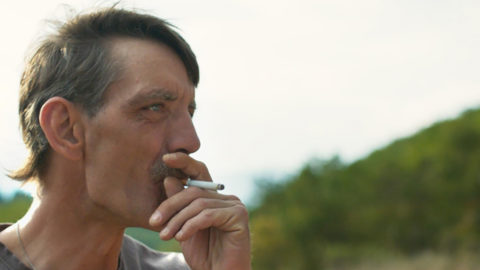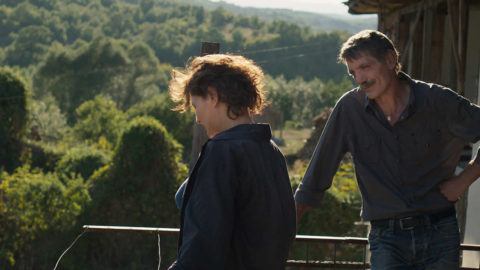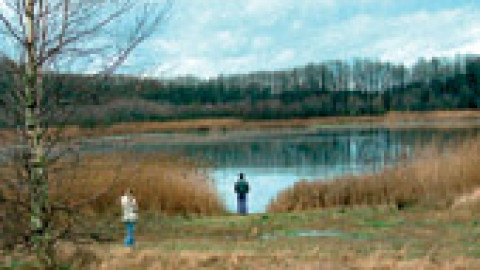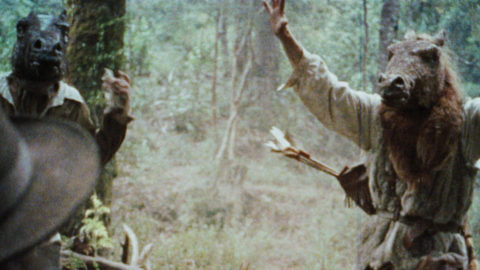Feeling at Home: Our House, Drift, and Western
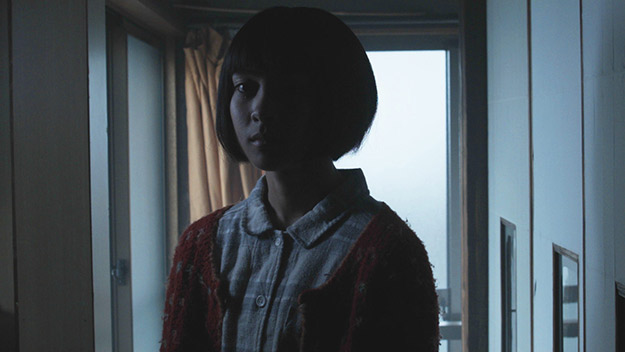
Our House
Home is an uncanny place in horror movies, thrillers, and ghost stories. What is scarier than being threatened in the place where you feel safest, more unsettling than the unknown emerging from the familiar? Director Yui Kiyohara studied with J-horror master Kiyoshi Kurosawa at Tokyo University of the Arts, where she made her thesis film and debut feature, Our House (2017), which has its American premiere in this year’s edition of New Directors / New Films. Not a horror film or thriller, nor exactly a ghost story, it is a deeply uncanny portrait of a home, most effective in its close attention to domestic spaces and its moments of intimate chamber drama.
The house in question is tucked behind a shabby storefront with a metal roll-down gate over the front door, but inside it is all wood paneling, tatami mats, and shoji screens. Traditional Japanese houses, lacking clear glass windows, feel inward-looking; translucent rice-paper, sliding doors, and latticed room dividers create spaces at once secretive and porous. Carefully establishing these interiors, Kiyohara evokes Ozu with her exquisite, static compositions, including floor-level “tatami shots” of women eating meals. This style suits what appears at first to be a delicate, realistic story about a 14-year-old girl, Seri (Nodoka Kawanishi), living alone with her mother, Kiriko (Yukiko Yasuno). Seri is smart, sensitive, and moody, yearning for her father who died some years before. She writes in her diary; visits a “secret beach” with her best friend; experiments with makeup; bickers with her mother; has a birthday party at which she plays a mean practical joke on a cute boy. From time to time, she hears inexplicable noises or claims to see ghostly presences in the house.
The film changes abruptly with the introduction of a woman waking up on a deserted ferry at night. Disoriented and suffering from amnesia, she remembers nothing about herself except a name, Sana (Mariwo Osawa). She is befriended by a boyish young woman named Toko (Mei Fujiwara), who takes her home—to what appears to be the very same house where Seri and her mother live. The rest of the film cuts back and forth between these alternate realities. That the four women are somehow inhabiting the same space at the same time is first hinted through the footsteps and noises they hear, and eventually confirmed—though never explained—when Seri pokes her finger through a shoji screen, creating a hole that Sana notices; finally, objects begin to slip between the realms.
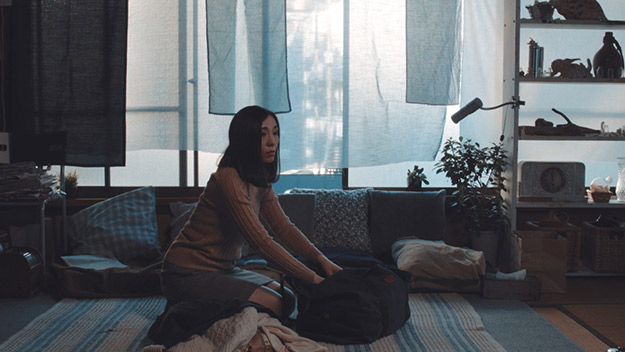
Our House
The mystery thickens. Added to the enigma of Sana’s identity are bewildering clues that Toko—a reticent, oddly ascetic loner—is involved in some furtive, possibly dangerous undercover activity. The story becomes willfully convoluted and opaque, building an elaborate puzzle and then taking the easy route of leaving it unsolved. But the film is never airless, and its best moments vividly evoke the relationships and inner lives of the house’s inhabitants. Toko and Sana, sewing clothes together, start singing a children’s song, then spontaneously jump up and run around laughing, like the adolescent girls giddily dancing around at a sleep-over party in the film’s opening moments. Later, in a sudden blackout, the two women find each other in the dark and touch one another’s faces almost like lovers. Seri comes downstairs in the grey dawn after her birthday party and meditatively burns the paper decorations and wrappings in a fire pot. She and her mother pause during dinner, captivated by a recording of Bach’s Well Tempered Clavier—which serves as a clue to the film’s contrapuntal, fugue-like narrative structure.
“This house is alive,” one character says, and late in the film the interiors that have become familiar seem to shift and change bewilderingly. Most films play with time in some way, flashing back or skipping forward or interweaving simultaneous events. Film space is often no less malleable and constructed, though only occasionally, as in later films of Orson Welles, do you notice the dream-like incoherence of the settings. Drift (2017), another feature debut by a female director screening in New Directors / New Films, shares Our House’s poetic treatment of space, and its intimate focus on a pair of women. Both directed and lensed by Helena Wittmann, Drift reverses Kiyohara’s contained focus on a single location. As the title suggests, it is a film that never settles in one place for long, moving freely around the globe, encompassing vast distances and uncharted waters.
The first place we see is an empty hotel room in a wintry seaside town: clean and spare, with neatly made, gray and white twin beds. During a long, static shot of the room, we hear two women come in and go out again without ever appearing in the frame—a technique that recalls Abbas Kiarostami’s pairing of off-screen sounds and nearly still images in 24 Frames. Throughout the film, Wittmann’s camera often holds on a shot after the characters have left it, seeming as interested in the spaces they pass through as in the women themselves; as concerned with absence as with presence. We learn little about the two friends, Theresa and Josefina (Theresa George and Josefina Gill), who in this prologue are apparently vacationing together. They walk by the pewter-colored North Sea, huddle on the balcony in the pale northern sunlight, eat hot dogs on a boardwalk, talk about primeval creation myths, explore a beach at night with a flashlight. In a striking cut, the almost total blackness of this scene gives way to pure white: the women’s sleeping heads just showing above the snowy, frozen waves of a comforter, as milky morning light fills the hotel room.
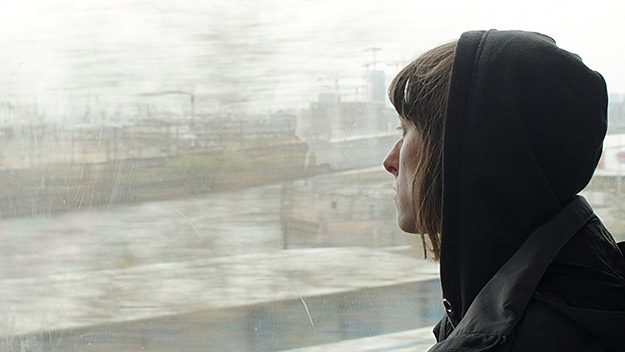
Drift
After this prologue the friends separate, with Josefina leaving Germany for Argentina. Sharing a last cigarette at dusk, they joke about sending messages across the sea in bottles. And then the film begins to drift, following Theresa first to the island of Antigua & Barbuda, and then on a sailboat crossing the North Atlantic. Theresa George, an ethnologist who conceived and developed the film with Wittmann, plays a silent, solitary observer and traveler. She bicycles through the industrial docks of Hamburg; drives around Antigua’s rural roads and sits in her car staring impassively at the ocean; swims alone in a lighted pool that floats in blackness; works on her laptop at night, surrounded by tropical vegetation gleaming in the dark.
On the boat she mostly sleeps, and as she lapses out of consciousness the film abandons human scale completely, giving way for a good twenty minutes to nothing but open ocean, filmed in various shades of light and weather: cobalt blue and heaving in shimmering swells; black except for a glistening path of moonlight; covered in shifting scales of brightness like beaten metal; gauzy with fog and rain. The images are beautifully mesmerizing, though perhaps not for those prone to seasickness—at times the camera lurches up and down like the prow of a boat—or to boredom, as the sequence is uncompromising in its duration, underscored by a subtly abrasive electronic drone. (The sound design by Nika Breithaupt mixes field recordings with synthesizer.)
When the film comes back to land, it is to an indistinct, primeval landscape gradually forming out of the mist and soaking up color. Theresa is rediscovered, sitting in a lichen-covered tree with her back to the camera, then as a tiny figure walking across an immense, barren moonscape of beige rock. (Only from the final credits can you deduce that she is now in the Azores.) Then, with a cut as shocking as that earlier one from black night to white morning, she is back in a city, surrounded by crowds and noise. Gazing out the window of a train, her blank face raises questions, but reveals no answers, about how she feels after this journey. A final scene reunites the two friends, not physically but through a video call on Theresa’s laptop—a digital message in a bottle. As Josefina gives a tour of her new apartment, Theresa gets up to make coffee, leaving the shot. Accompanied by a pop love song, the camera tracks very slowly toward a photograph of the ocean taped on the window, until the swirl of blue wavelets fills the screen. This reference to the final moments of Michael’s Snow’s avant-garde classic Wavelength (1967), in which the camera takes 45 minutes to cross a room and come to rest on a photographs of waves, puts in perspective the film’s centerpiece of crossing the Atlantic.
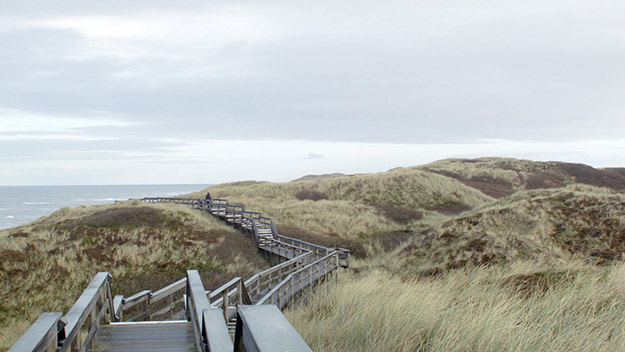
Drift
Drift sets out to juxtapose everyday life with the impersonal scale of nature, and succeeds in capturing that pleasant feeling of smallness, of the self dissolving in reverie, that you get from gazing at the sea. The film’s approach is radical for a feature, jettisoning dialogue and plot, and it is radical too in its depiction of female solitude, a rare subject in art. (Men, who are peripheral in Our House, are wholly absent from Drift.) Instead of a lone man pitted against the sea or conquering a mountain, we get a woman who submerges herself in strange places and in the liquid element. Water—falling as snow or rain, sloshing around in the bottom of a shower stall, or passing through endless quicksilver transformations far from land—is film’s central element, the model for its formless form.
Wittmann has said, “We didn’t get any film support, because we didn’t have a traditional script.” The project was made possible by a scholarship from the school where she teaches film (though she expressed regret that she could not afford to shoot on 35mm, which she would have preferred), and certain donated elements, like the use of the boat. Another film made without a traditional script or professional actors is the recent, superb Western (2017) by Wittmann’s countrywoman Valeska Grisebach, who told Film Comment of finding the film’s location, “I was really traveling, as we say in German, into the blue, so I didn’t know where I would end [up]. I just knew I was interested in these border regions because you have such a mixture of people and so much movement.” Focusing on a group of German construction workers who are building a hydroelectric plant in a remote region of Bulgaria, this is another film about how a place can unsettle and transform people.
Like Ida Lupino’s The Hitchhiker (1953), Western is a compassionately unsparing dissection of masculinity and the dynamics of all-male groups by a woman filmmaker. Its relationship to the western genre is multifaceted, from the wildly majestic landscapes to the ambivalent, sometimes hostile and sometimes tenderly curious relationships between outsiders and natives, arrogant modernity and traditional community. Above all, through the central character of Meinhard (Meinhard Neumann) the film presents an extraordinarily sensitive, ambiguous response to the classic western loner hero. Strong and silent, lean and rugged, he is romanticized in his gentle authority and his rejection of the bullying, jingoistic attitudes of his compatriots. But gradually we see another side of this rootless ex-soldier, who movingly tries to connect with the local villagers despite the barrier of language. There is a stubbornness and disturbing intensity in him, a violence that he can’t always suppress, a sense of dislocation and separateness that finally defeats his efforts to connect and join in.
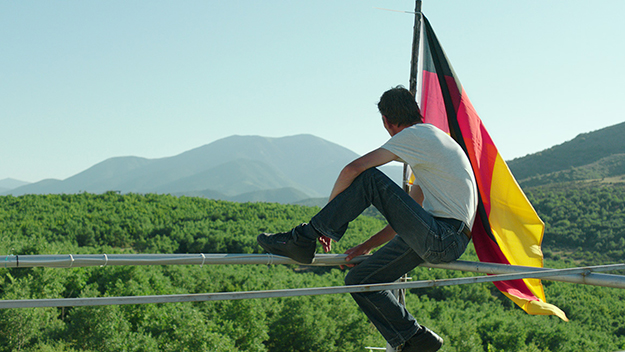
Western
All three films reject comfortable narrative formulas and express varieties of alienation or estrangement, not necessarily as an unpleasant state. They deal with the experience of space and of place, with connections across distances and failures of face-to-face communication. More than words, they use music and dance to evoke an ideal of communion. It may be coincidence that all these films are directed by women. More importantly, all are made by directors willing to travel into the blue, to venture into the unfamiliar without a map but with open mind and eyes.
Our House screens April 6 and 8 and Drift on April 5 and 7 in New Directors / New Films.
Imogen Sara Smith is the author of In Lonely Places: Film Noir Beyond the City and Buster Keaton: The Persistence of Comedy, and has written for The Criterion Collection and elsewhere.



